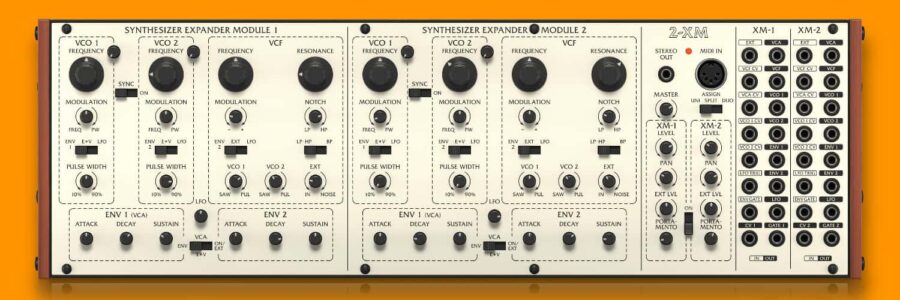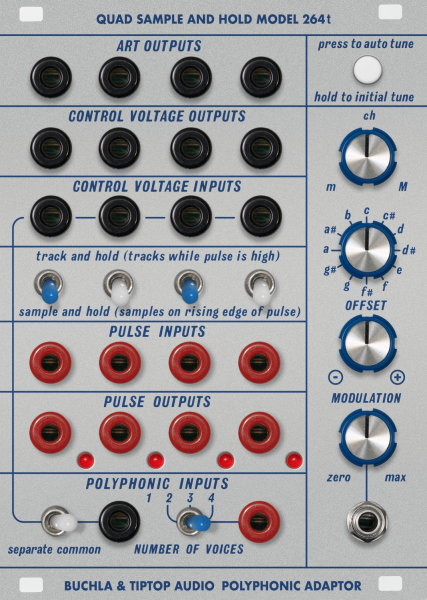Behringer 2-XM, A Euro Format Oberheim 2-Voice Copy, Now Shipping

Three years since it was first announced, today, Behringer announces that its 2-XM, a Euro format knockoff of the classic Oberheim Two Voice synthesizer, is now shipping.
What they have to say about it:
“The original design consisted of two single-voice modules coupled together. With its 37-note keyboard, it was a considerable size but introduced a feature no other synth was capable of at the time: polyphony.
The 2-XM combines all the features of the original with all the awesome stuff that we’ve all come to love in modern synths, such as MIDI and USB implementation, stereo, as well as a ton of CV and GATE ins and outs that’ll allow you to transform and shape sounds any way you want!”
Though it lacks a keyboard and has been reimagined in a Eurorack-friendly format with some modern enhancements, Behringer’s duophonic 2-XM nonetheless recreates the design of the Two Voice faithfully. Each of its two modules is equipped with two VCOs based on original Oberheim designs, with saw and pulse waveforms, PWM and oscillator sync on offer.
These run through a VCF section based on the SEM’s legendary 12dB/oct multimode filter, which morphs between low-pass, high-pass and notch modes with a single knob. An additional band-pass mode is accessible through a switch below. Each module has a noise generator, along with two ADS envelope generators and a single sine-wave LFO on modulation duties.
On the right-hand side there is a master section with level and pan controls for each module, which let you create some interesting stereo patches, along with portamento controls and a switch to choose between 2-XM’s unison, duophonic and split modes, the latter of which splits each of its modules across a keyboard. Here you’ll also find a level control for 2-XM’s dual external audio inputs.
These can be found on the 2-XM’s 32-point patchbay, which provides plenty of scope for integrating 2-XM into a broader hardware set-up or Eurorack rig. Further I/O is provided by a 3.5mm stereo output and MIDI input on the front panel, joined by a 1/4″ stereo output, MIDI thru and USB port on the back.
Behringer 2-XM Video Intro:
Features:
- Copies synthesizer circuitry from the ‘70s
- Analog signal path(VCO, VCF and VCA)
- 2 independent voices for polyphonic, split or 4 oscillator unison sounds
- 2 variable oscillator shapes with adjustable pulse width
- Oscillator sync
- 2 multi-mode filters with low-pass, high-pass, band-pass and notch modes
- 2 analog LFOs with sine waveform
- 4 analog envelope generators for control of filters and amplifiers
- Noise generator
- Extensive modulation capabilities, including internal and external sources
- 2-channel mixer section featuring level and pan controls for intense stereo sounds
- Portamento for pitch gliding effects
- 2 external audio inputs for processing external sound sources
- Dedicated audio outputs plus a combined stereo output
- CV and GATE In/Outs
- 16-voice Poly Chain allows combining multiple synthesizers for up to 32 voice polyphony
- Eurorack compatibler – main module can be transferred to a standard Eurorack case
- 67 controls to give you direct and real-time access to important parameters
- MIDI and USB implementation with MIDI channel and Voice Priority selection
The Behringer 2-XM is shipping now, with a global list price of $319 and a US list price of $399. It typically takes a month or two for their shipping synths to become available at retailers. Find out more on Behringer website.



